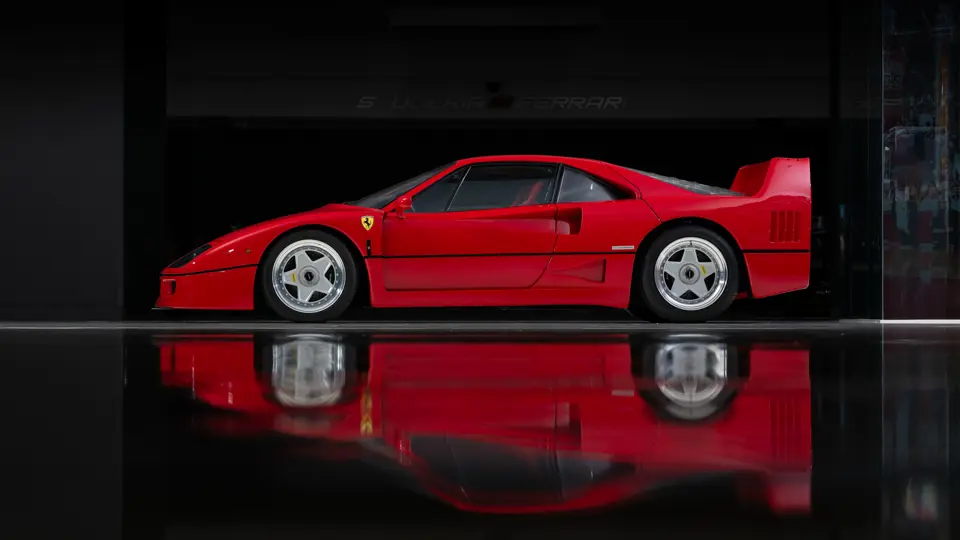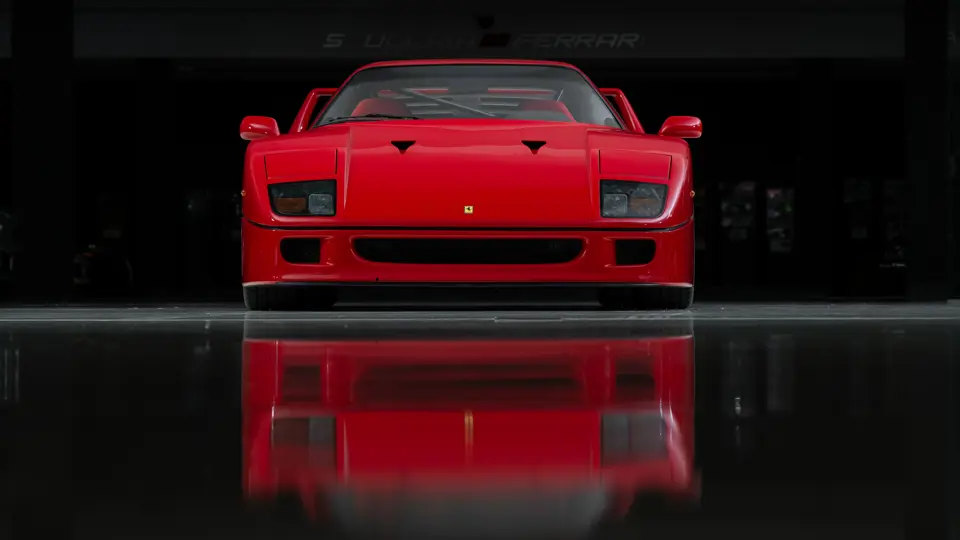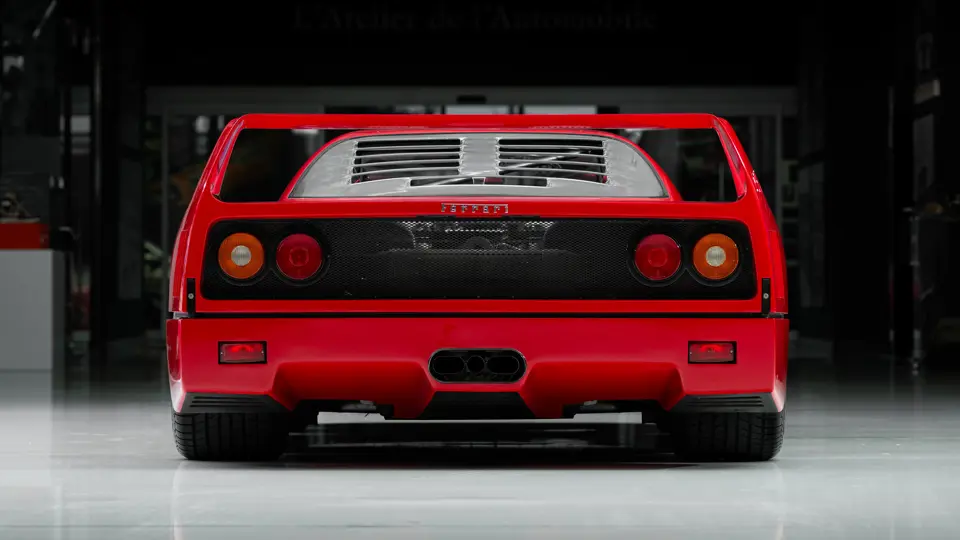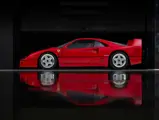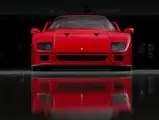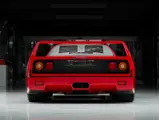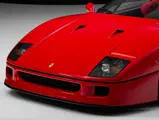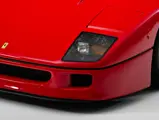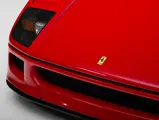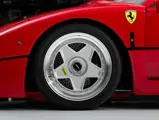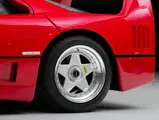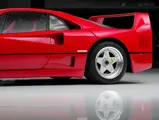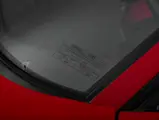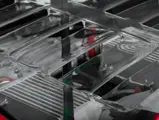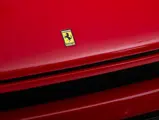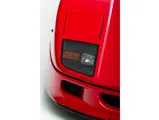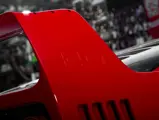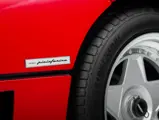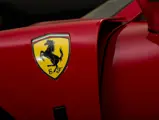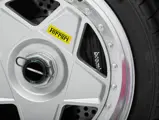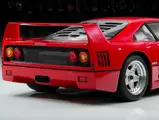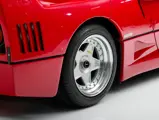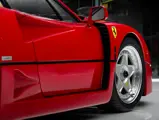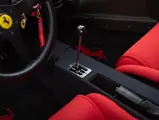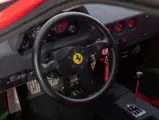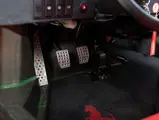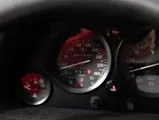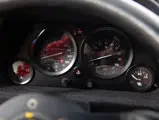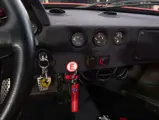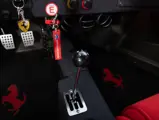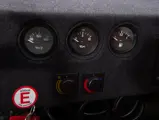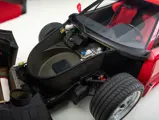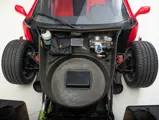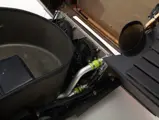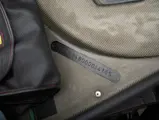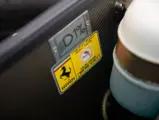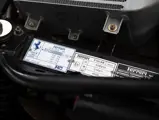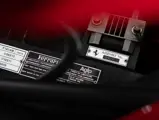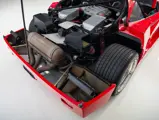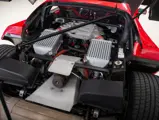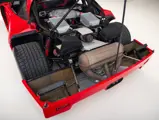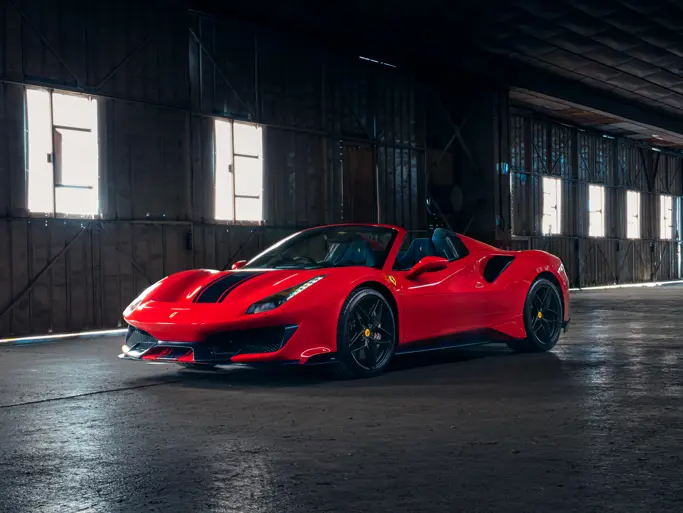
1990 Ferrari F40
{{lr.item.text}}
$3,470,000 USD | Sold
{{bidding.lot.reserveStatusFormatted}}
- Desirable “non-cat, non-adjust” mid-production example of one of the 20th Century’s greatest cars
- Impeccably preserved and maintained, showing only 1,606 km (~998 miles) at cataloguing time
- Well-documented with Ferrari Classiche Certificate of Authenticity and Red Book; retains numbers-matching chassis, engine, and gearbox
Unveiled at the 1987 Frankfurt Motor Show to celebrate Ferrari’s 40th anniversary, the F40 evolved from the 288 GTO Evoluzione, which was developed to compete in Group B at the 24 Hours of Le Mans. When a series of crashes prompted the demise of Group B, Ferrari adapted the design for production, creating one of the greatest cars of the 20th Century.
An uncompromising racer for the road, the Ferrari F40 dispensed with anything superfluous to driving pleasure—its ethos was closer to the 250 GTO than its contemporaries, the 328 and Testarossa. The dashboard was trimmed in stark gray cloth, while many surfaces on the interior were left bare. Likewise, there were no interior door handles, the seats were thinly upholstered, and early cars had polycarbonate windows. The F40 was born in an era of unabashed excess yet was almost masochistically austere—the ultimate expression of less is more.
Clad in aluminum, carbon fiber, and Kevlar panels, the car shared its predecessor’s 2,450-millimeter wheelbase but extra bracing in the tubular-steel chassis made it stiffer. The brutish bodywork, attributed to designer Leonardo Fioravanti, was lightweight and aerodynamically efficient and, with its vast wing, remains one of the most recognizable designs of all time.
Beneath the skin, the F40 continued the theme of a street-legal racer. Based on the 288 GTO engine, the dry-sump V-8 was stretched to 2,936 cubic centimeters, while boost from the twin turbos was increased from 0.8 to 1.1 bar. Driving through a manual five-speed transaxle, the Tipo F120 040 engine was good for 478 horsepower and 425 pound-feet of torque—enough to propel the car from 0 to 100 km/h in 4.1 seconds. Top speed was a headline-grabbing 324 km/h, making the F40 the fastest car on earth at the time. Driver aids were conspicuously absent.
“It harks back to a time—the late 1950s and before—when makes like Ferrari, Maserati, Jaguar, and Porsche built sport and GT cars for the road that could be raced with a minimum of modifications…,” wrote automotive journalist Rich Ceppos in his review of the F40 for Car and Driver. “What they offered was unvarnished excitement—the raw, elemental race-car experience for the street. The F40 is like that.”
THE IDEAL F40 SPEC, IMPECCABLY PRESERVED
Safety and emissions concerns prompted changes over the course of production. Among the most significant was the option of an innovative but sometimes troublesome self-leveling suspension system allowing the driver to adjust the height of the car. Another was the addition of catalytic converters to meet tightening environmental regulations. F40s without the adjustable suspension and catalytic converts—known in the community as “non-cat, non-adjust”—are highly prized for their superior handling and less-restricted engines.
One such example is offered here, remarkably well preserved and showing only 1,606 kilometers on the odometer as of cataloguing time. It completed production on 1 March 1990, finished as it is today in Rosso Corsa over Stoffa Vigogna (wool fabric), and was sold directly by the factory that same month. History compiled by former owners indicates that it was imported from Europe to Japan three months later and first registered there on 11 June of 1990 by a collector in Osaka, who drove the car sparingly. In 2004, the F40 would pass to another owner in Chiba prefecture, who retained it for five years before passing it on to its third and final Japanese caretaker in 2010. This owner stated that the mileage was 1,150 kilometers in 2015.
That year, renowned Ferrari specialists DK Engineering of Hertfordshire, England, acquired the F40 and had it imported to the United Kingdom. Of the more than 140 F40s the outfit has handled over the years, chassis 84169 was among the lowest-mileage examples seen within the prior five years, according to correspondence on file from the company’s founder and director. While under the care of DK Engineering, the car had the cambelts, fuel tanks, rear upper wishbone bushings, wheel lock clips, and fluids replaced, the suspension stripped and refurbished with overhauled dampers, the cam covers stripped and repainted, the valve clearances checked, and a fire system fitted. With this work completed, DK Engineering commissioned a Ferrari Classiche inspection, the Red Book for which was issued on 9 February 2016 and confirms 84169’s superb condition, replete with numbers-matching chassis, engine, and gearbox. It is accompanied by manuals in pouch and tools.
Since entering the Dare to Dream Collection in late 2015, the F40 has rarely been driven and continuously maintained, with the water pump replaced and a turbo unit rebuilt in 2020, and the air-conditioning system serviced and recharged in 2023. Surely one of the finest and lowest-mileage F40s to emerge on the market of late, it is nigh impossible to imagine a more appealing example of Ferrari’s quintessential 1990s supercar than this well-documented and impeccably preserved, “non-cat, non-adjust” F40.
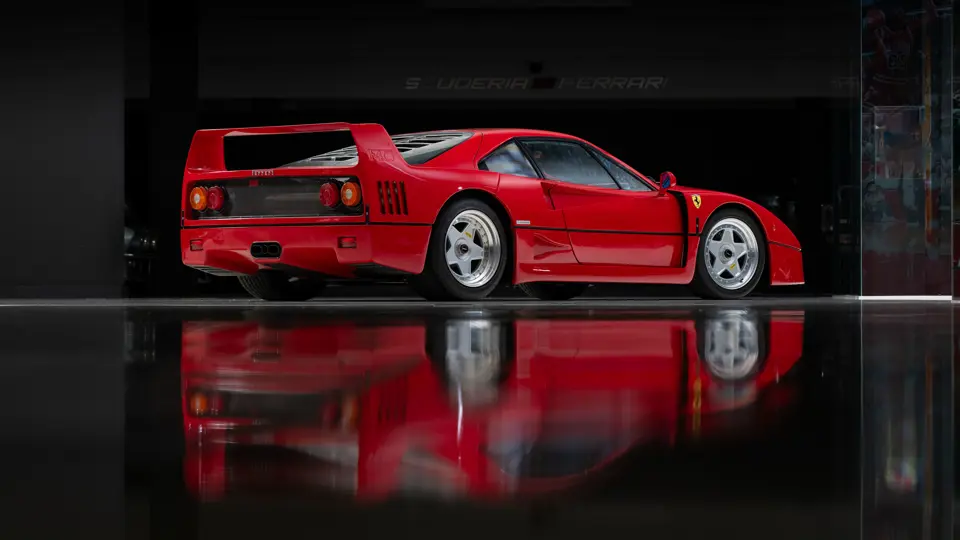
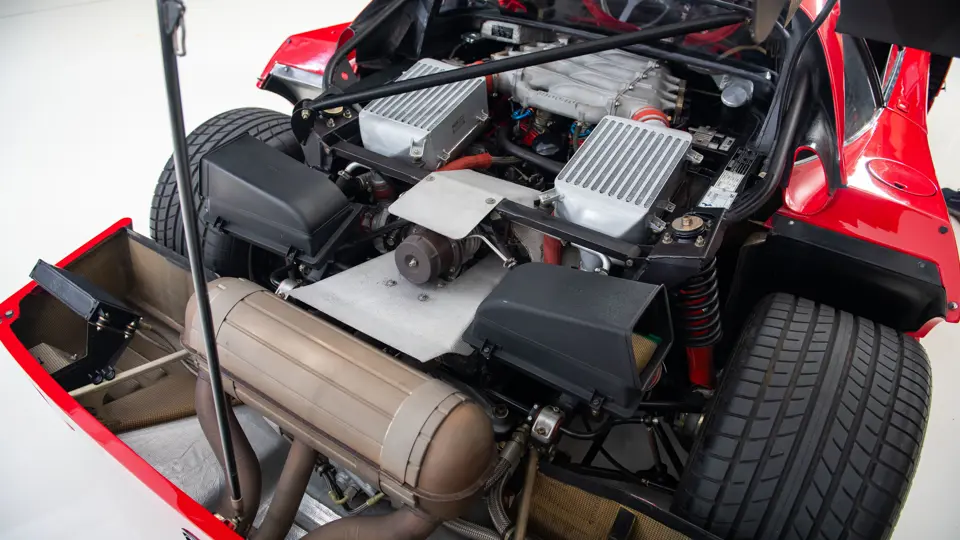


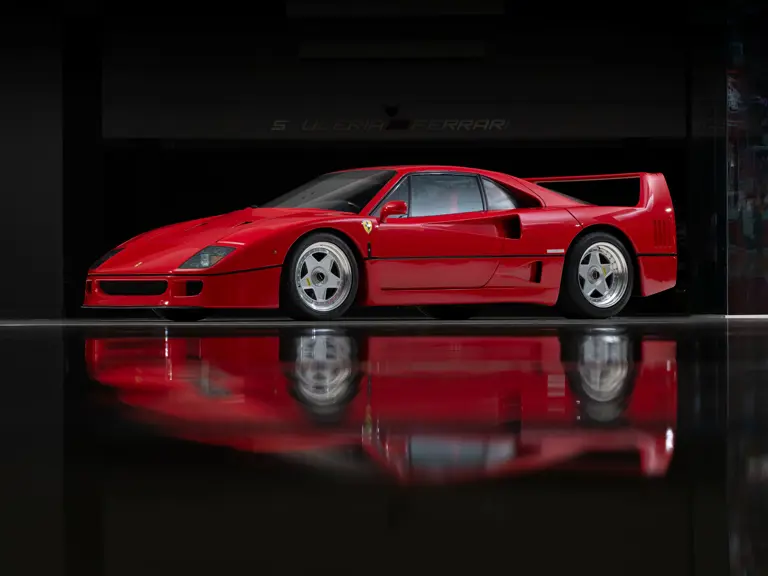

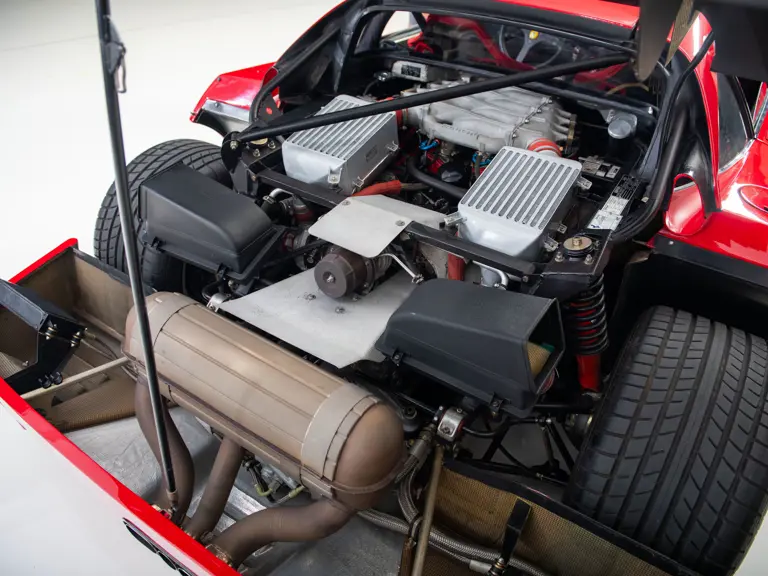

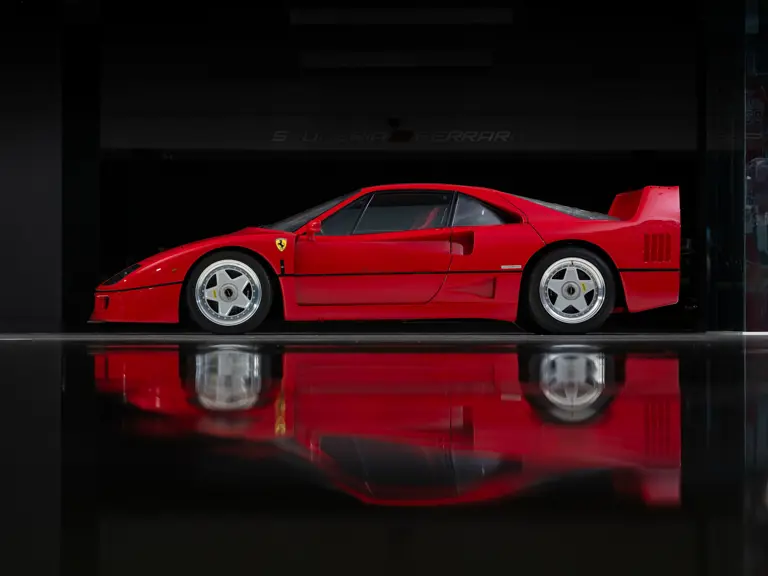

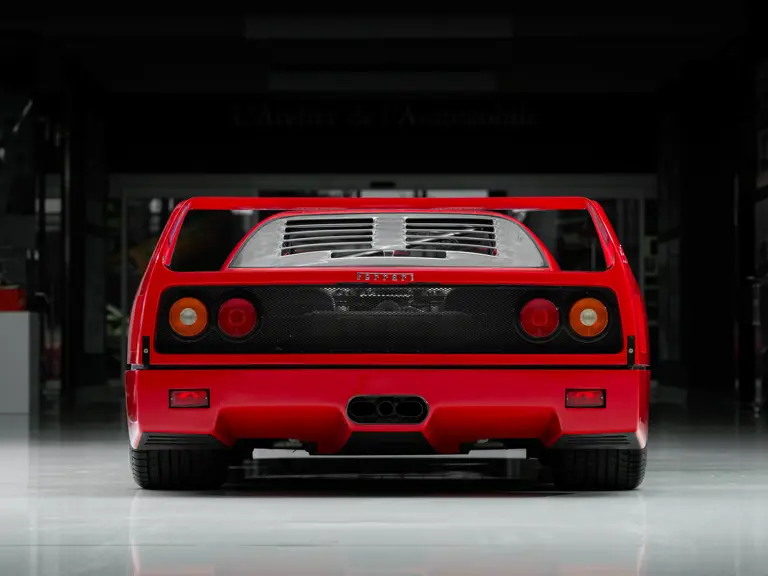
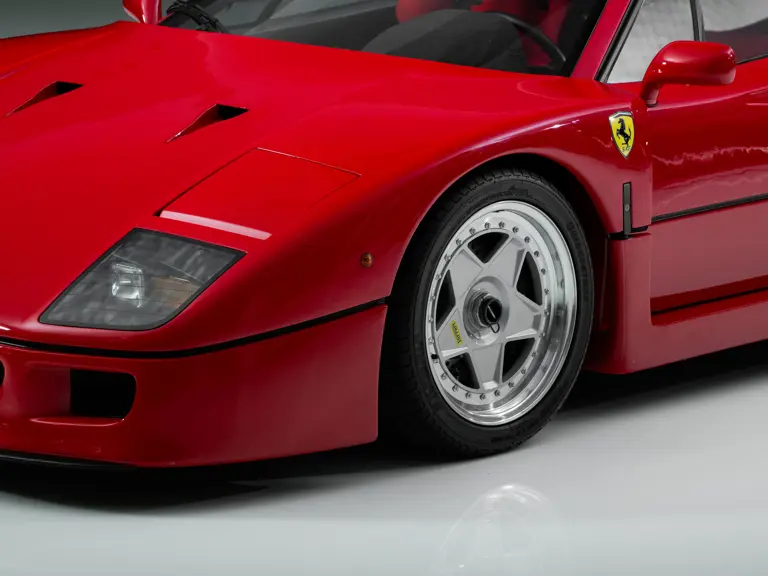


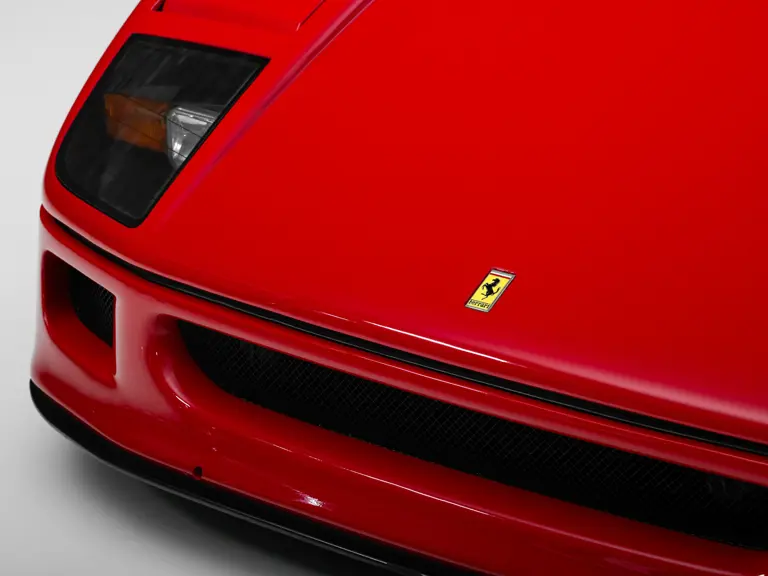

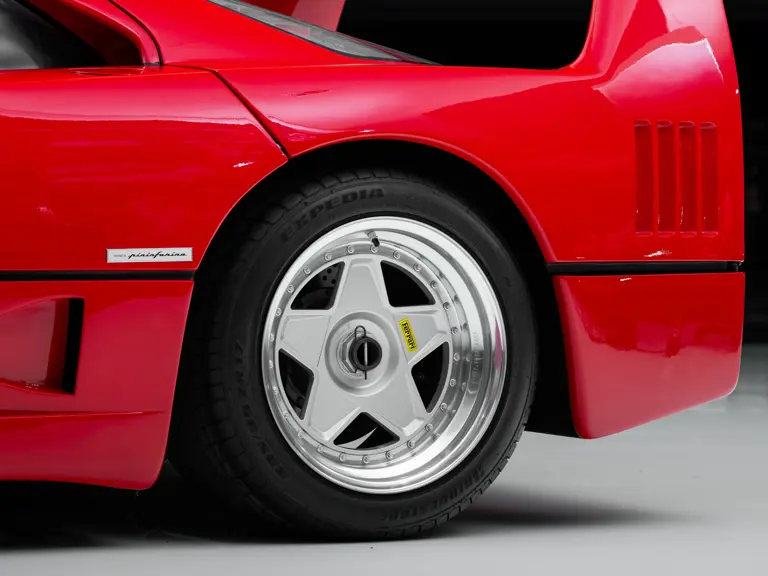
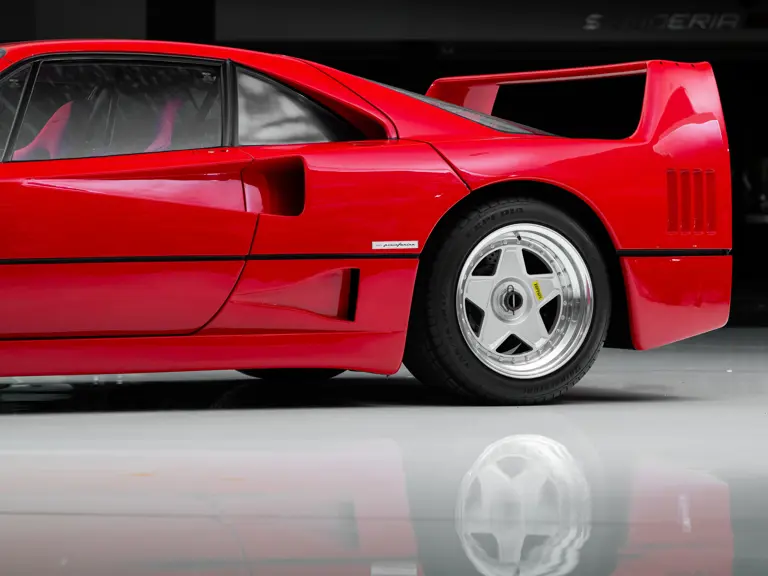
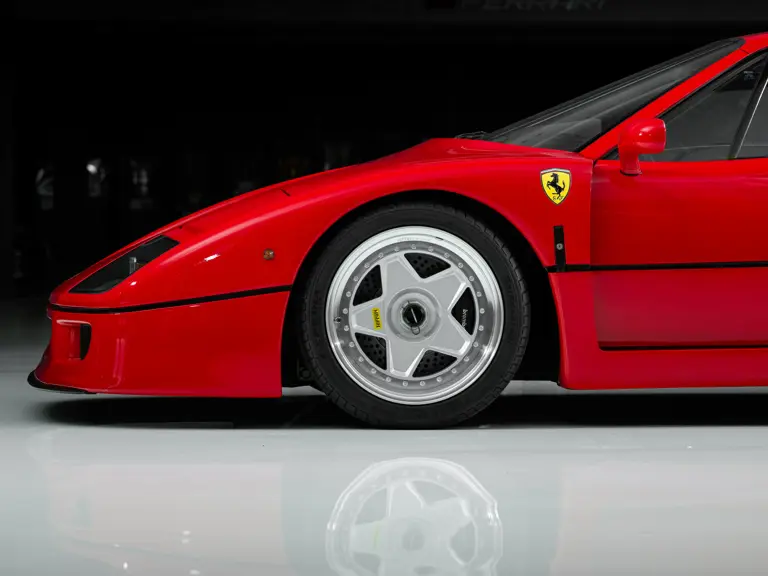
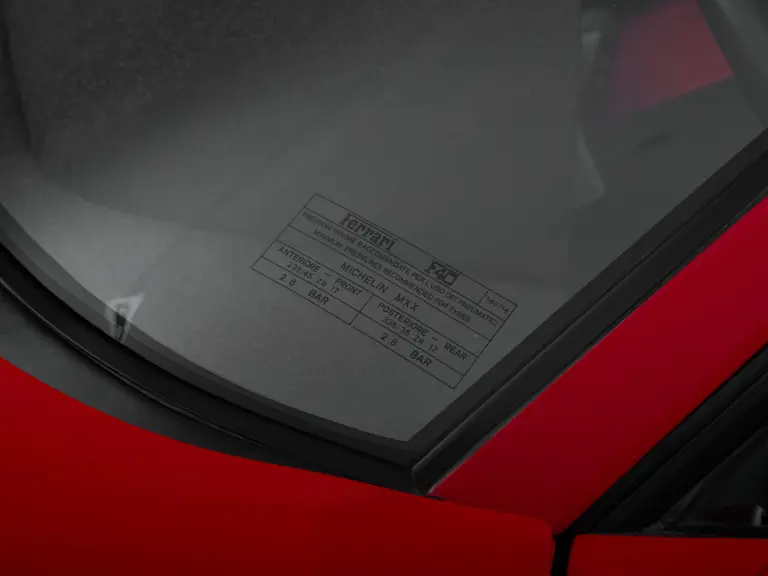
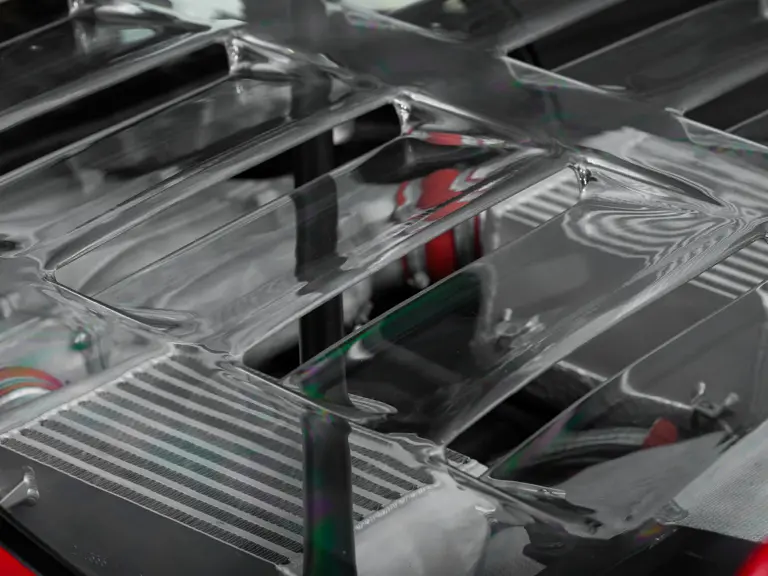
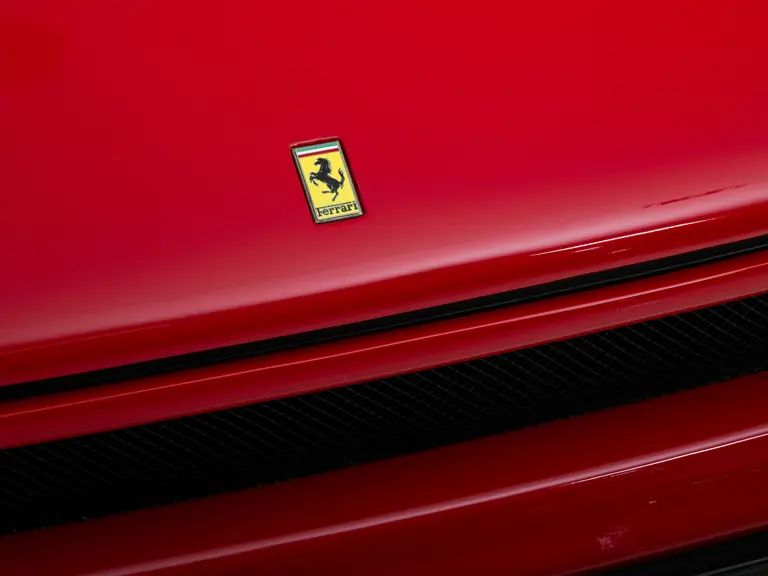
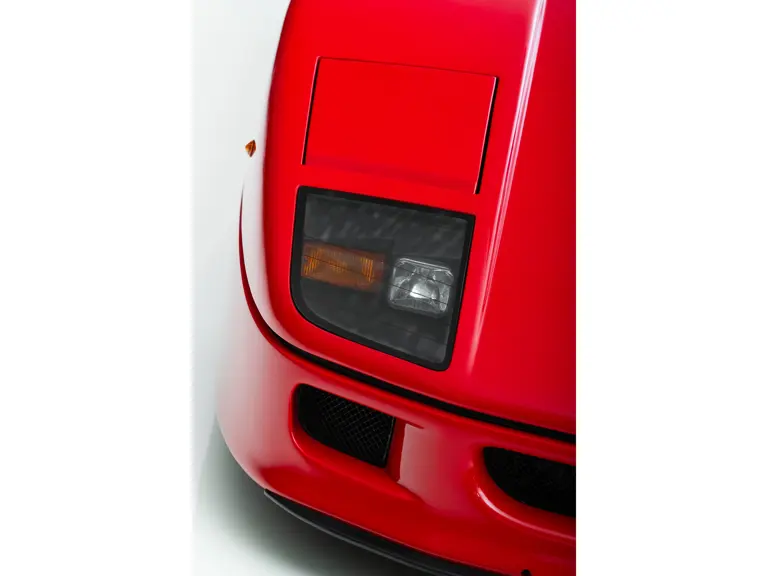
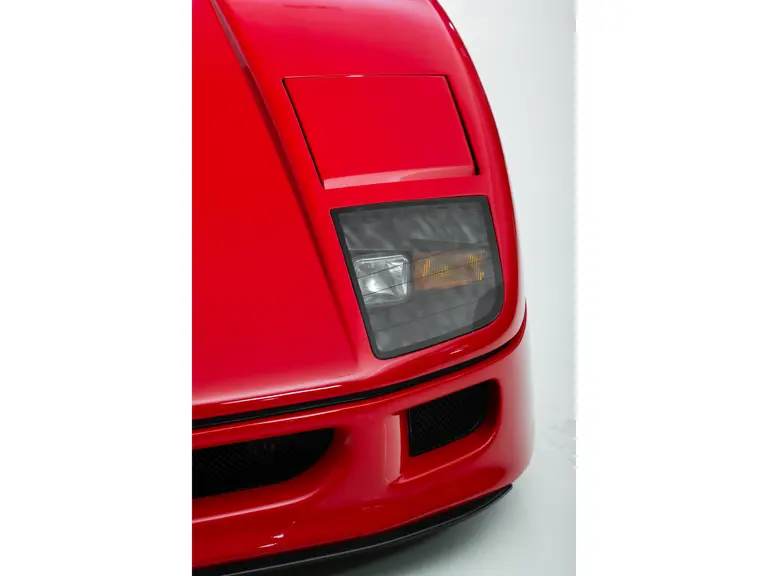
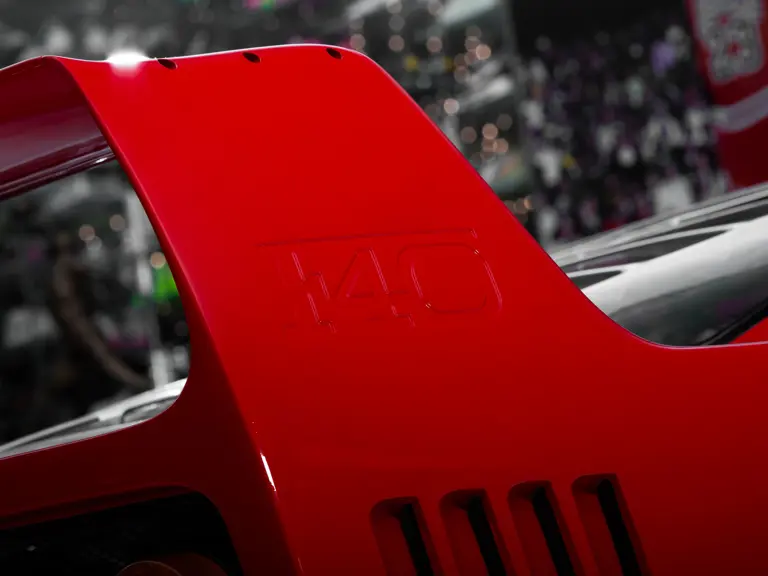
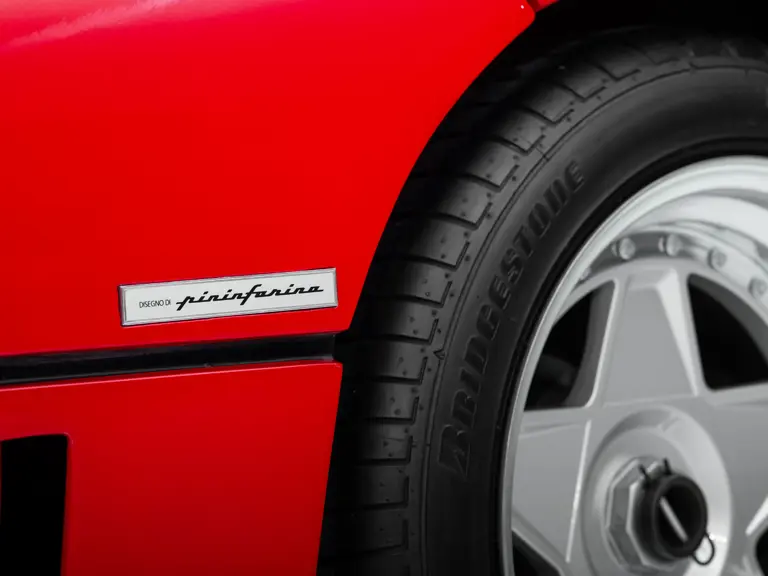
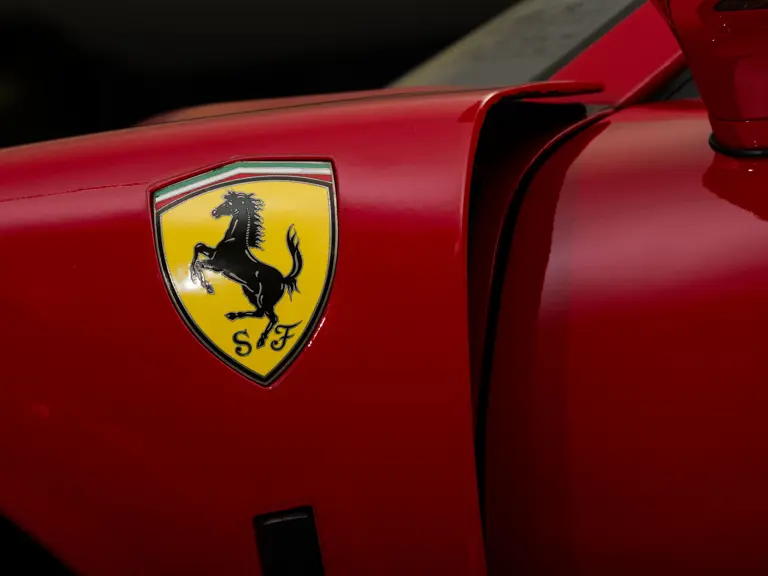
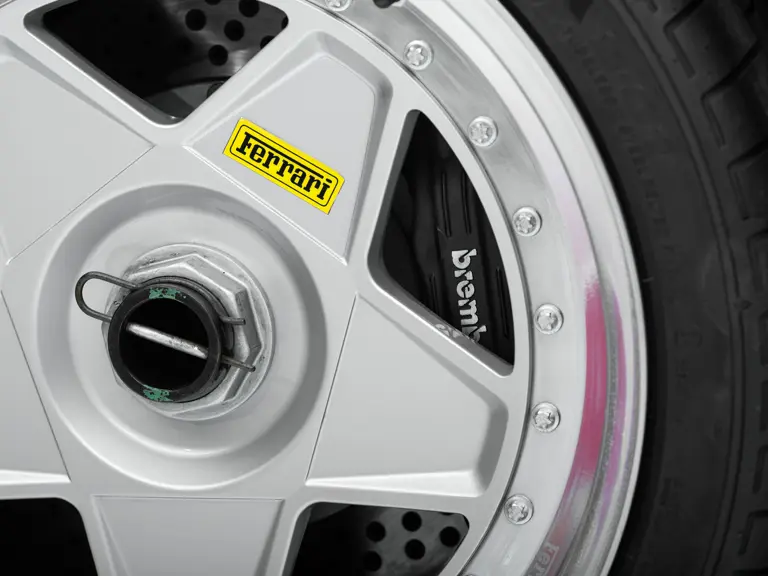
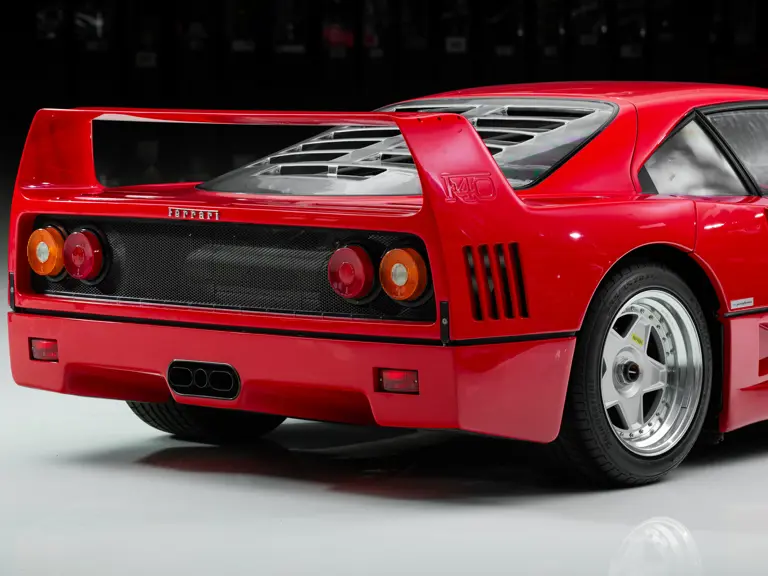
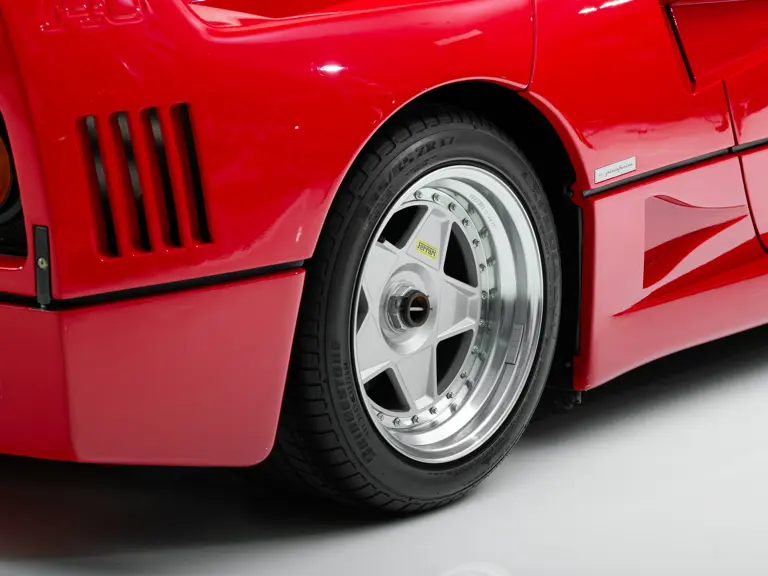
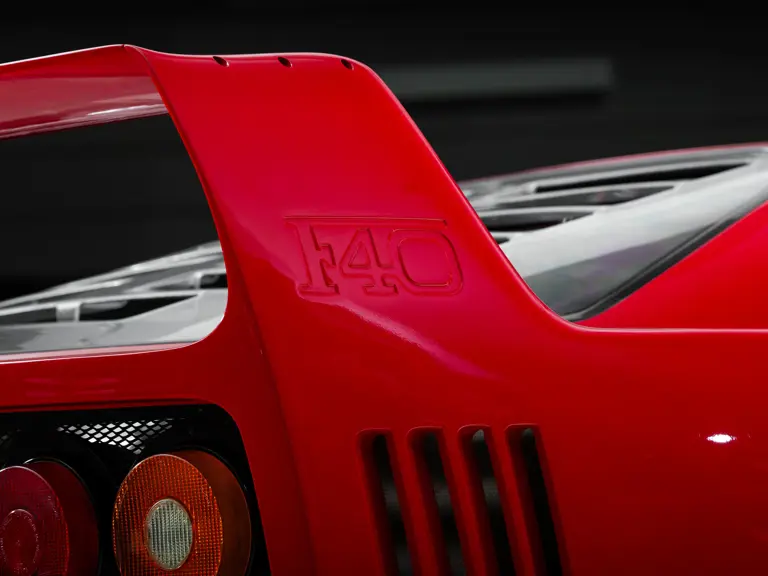
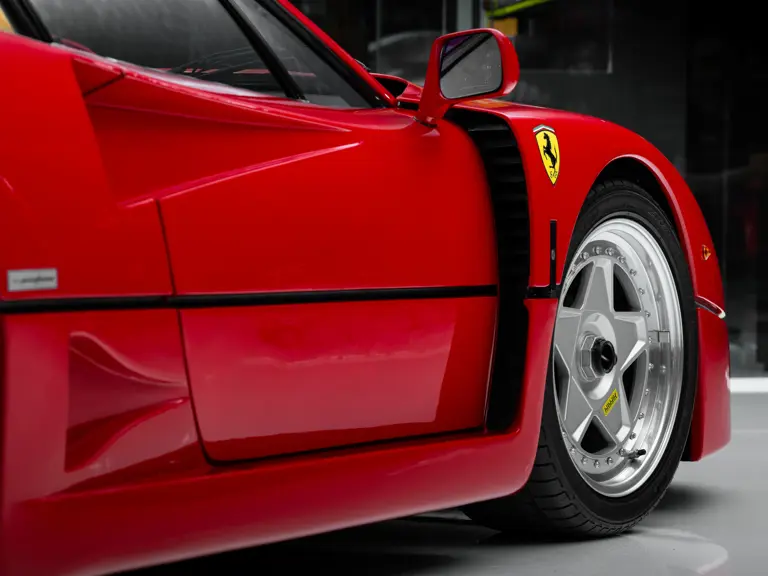

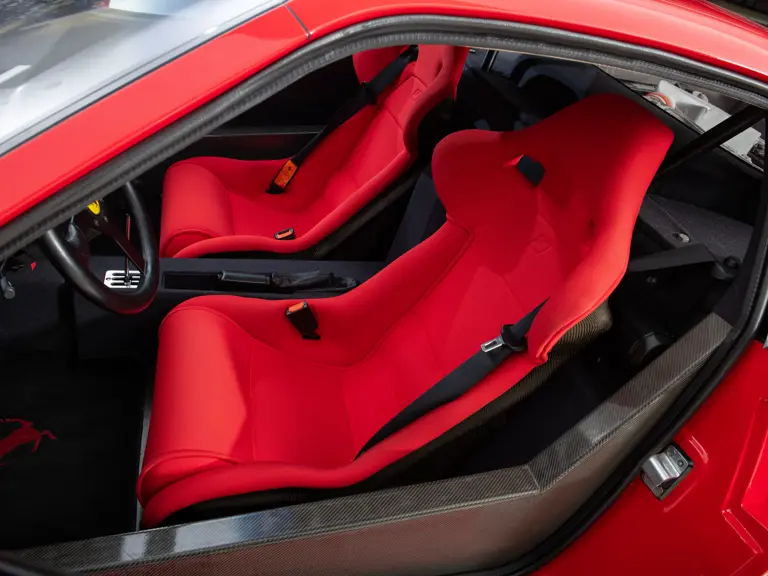
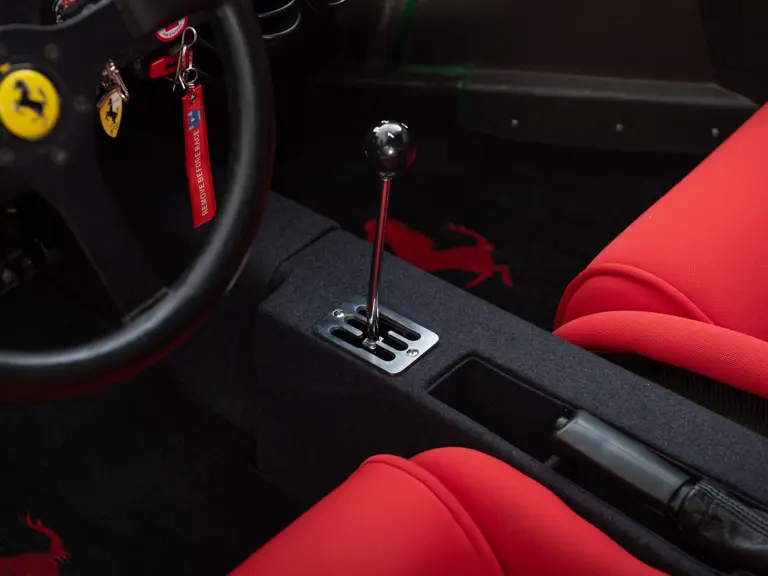
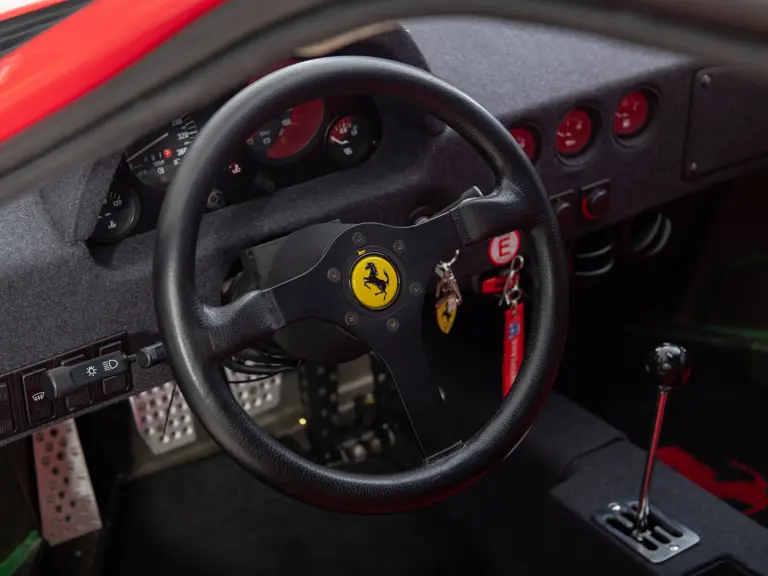

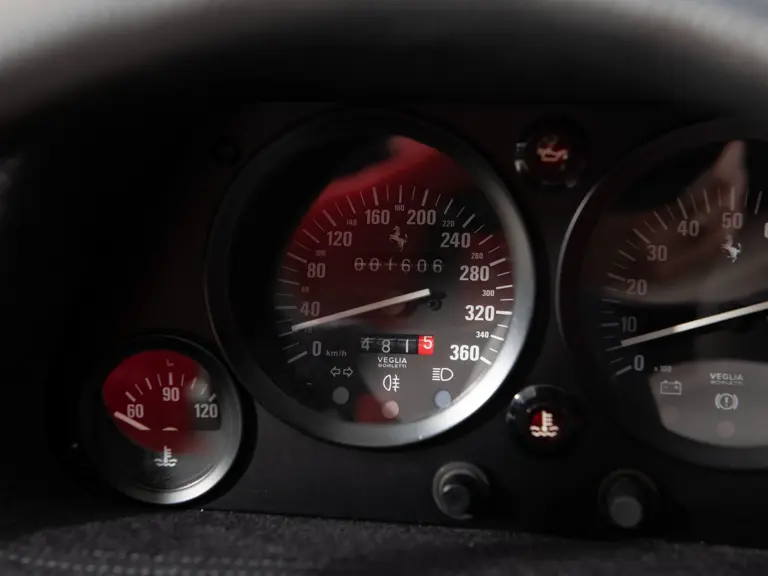


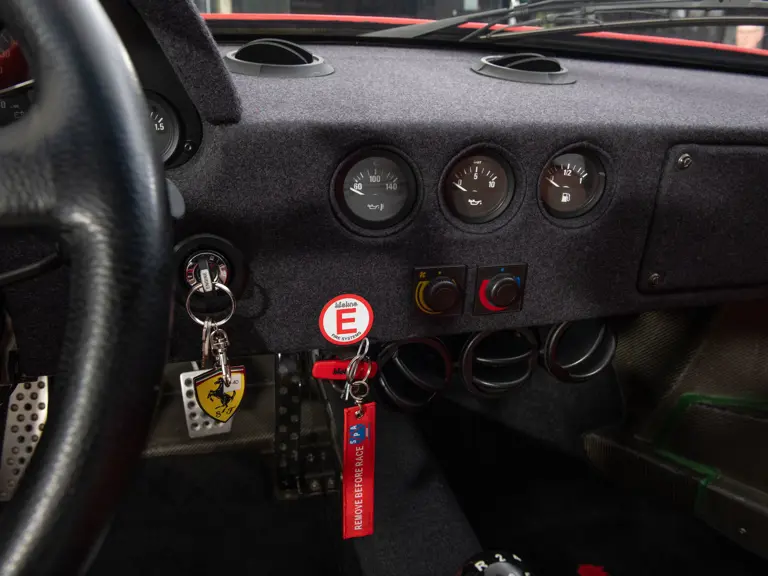
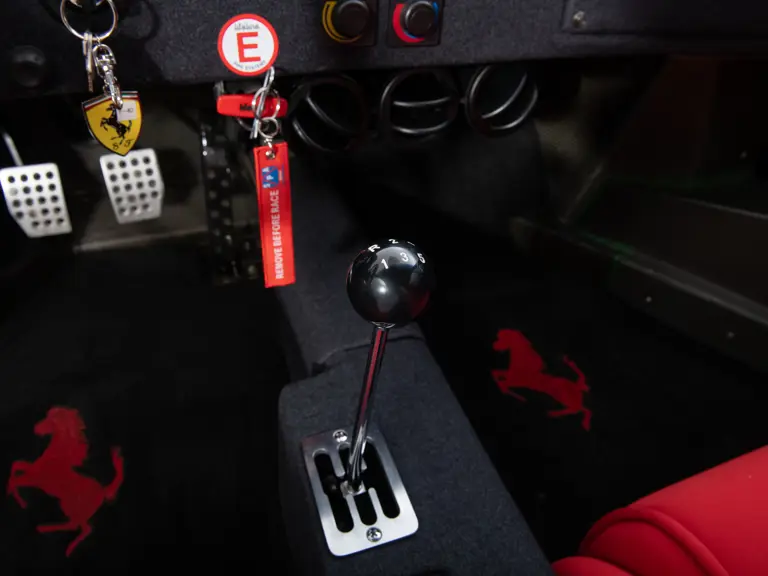
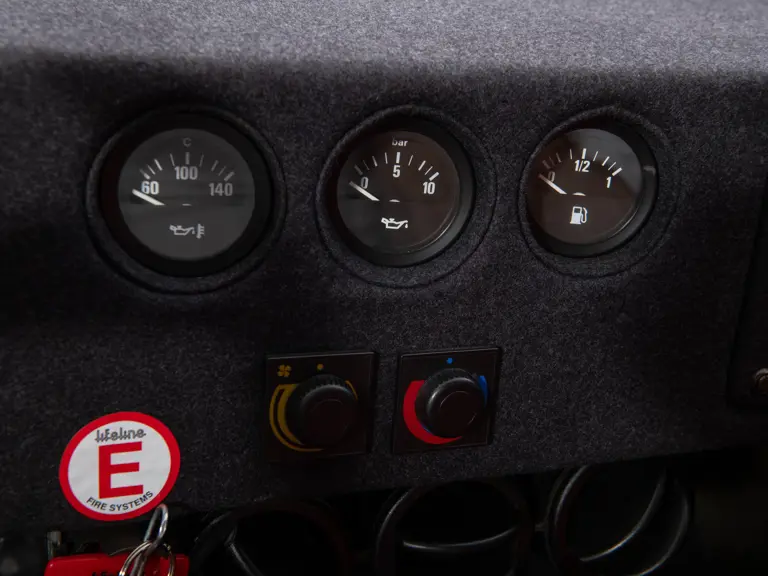
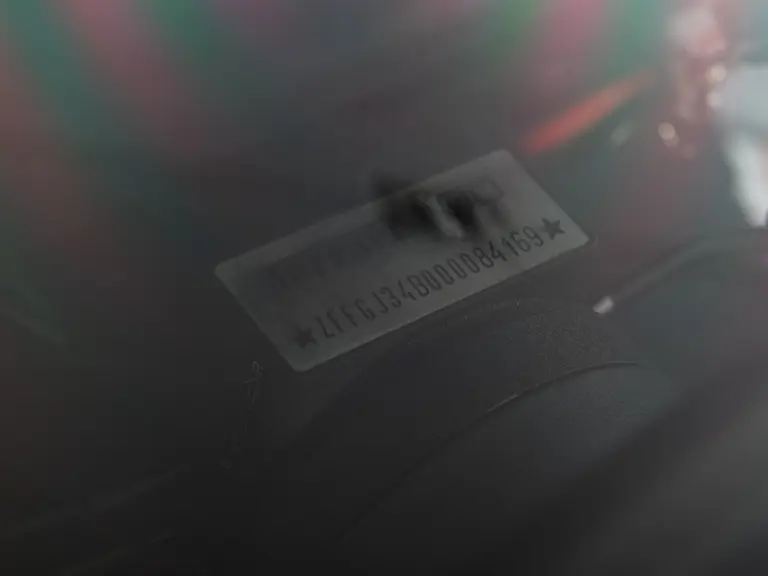
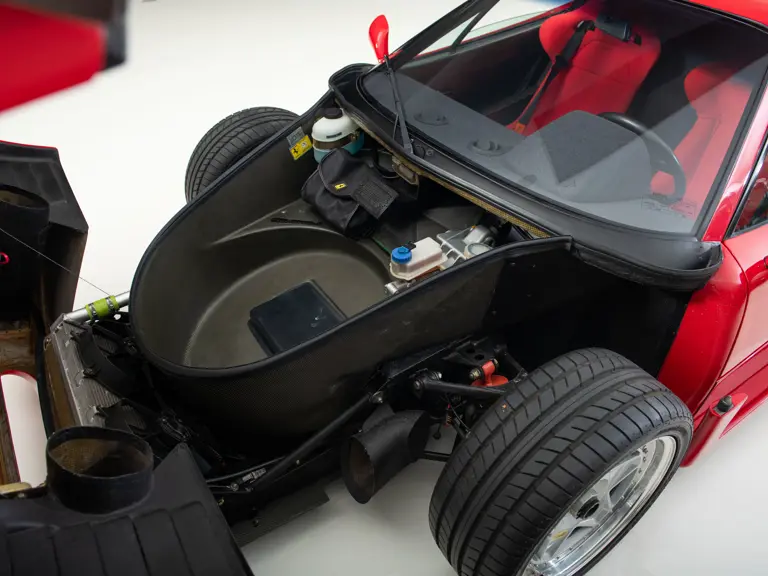

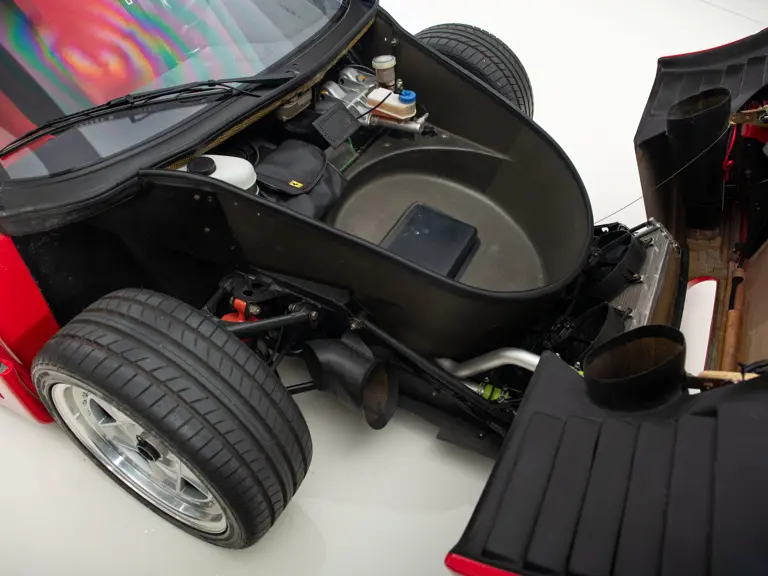
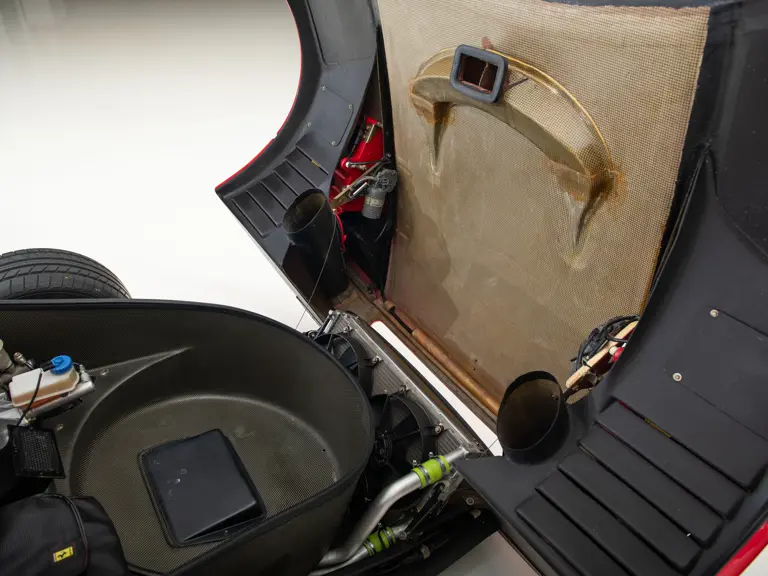
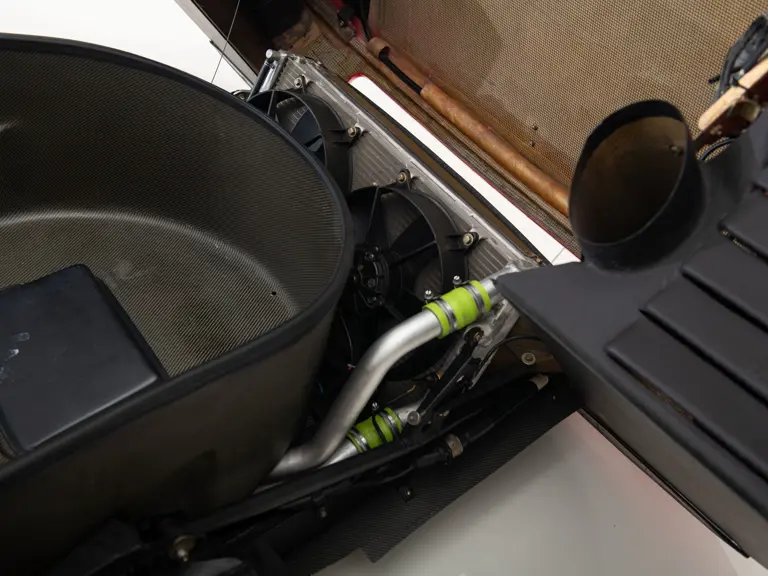
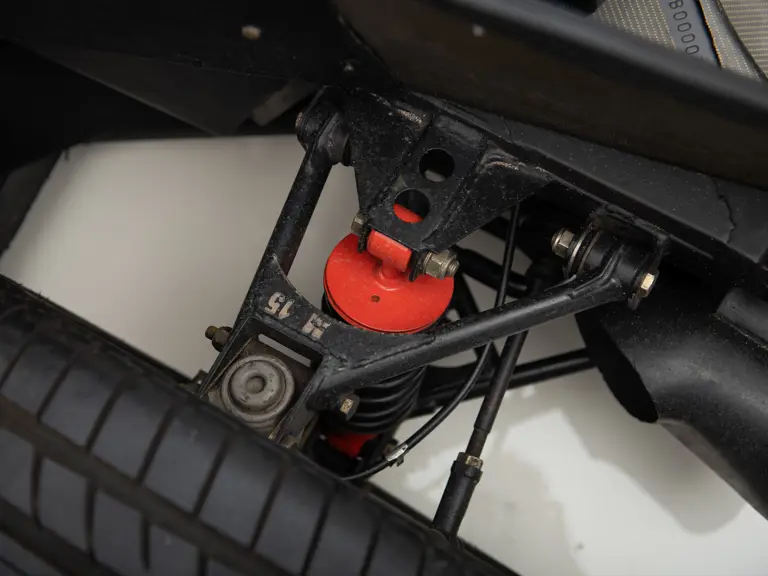
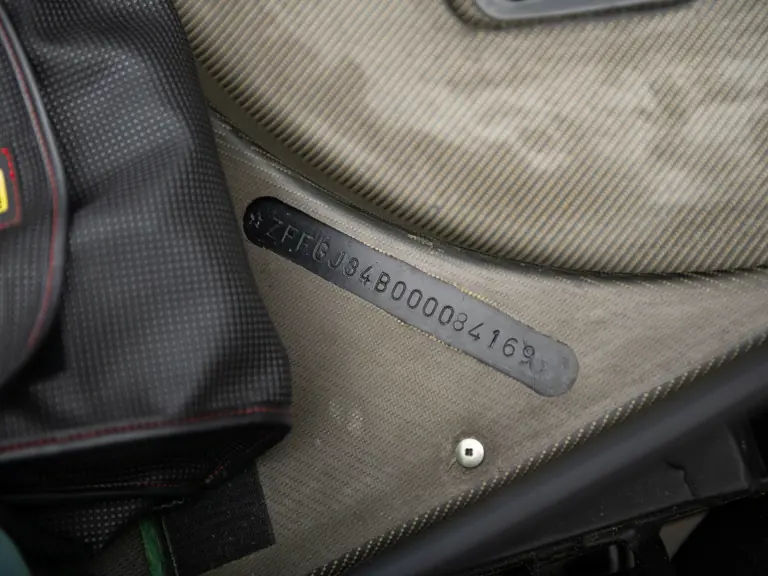
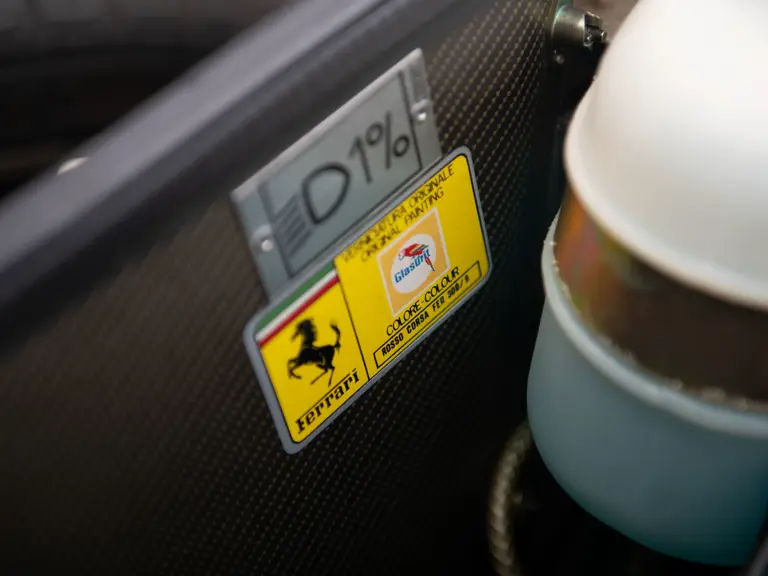
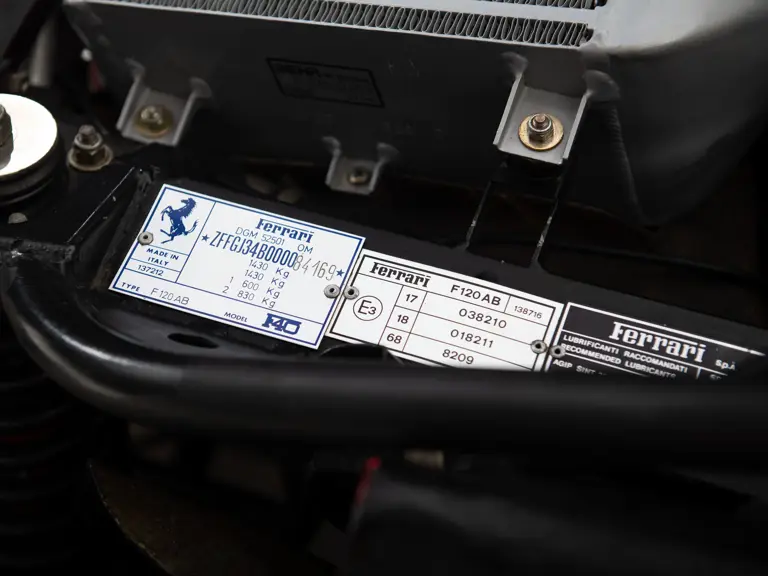
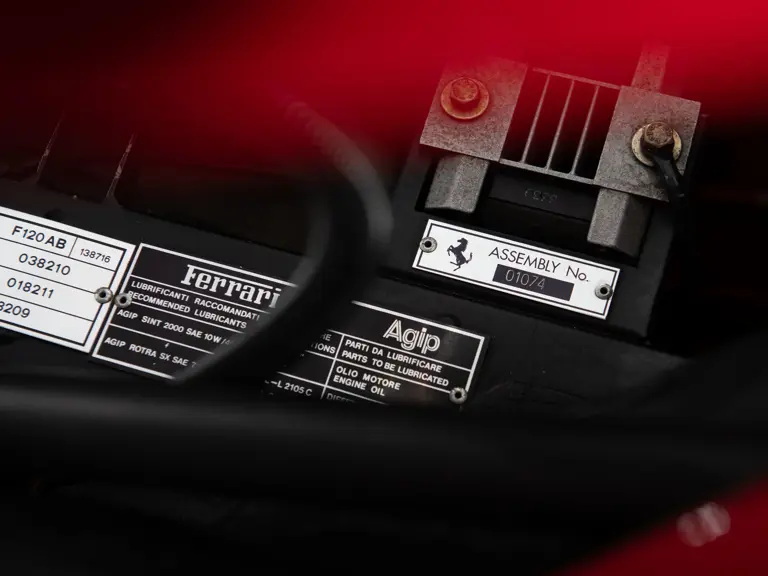
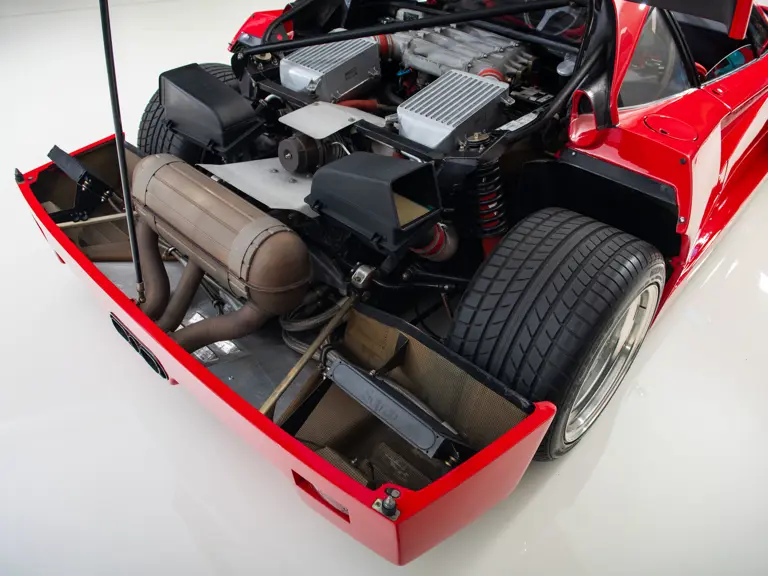
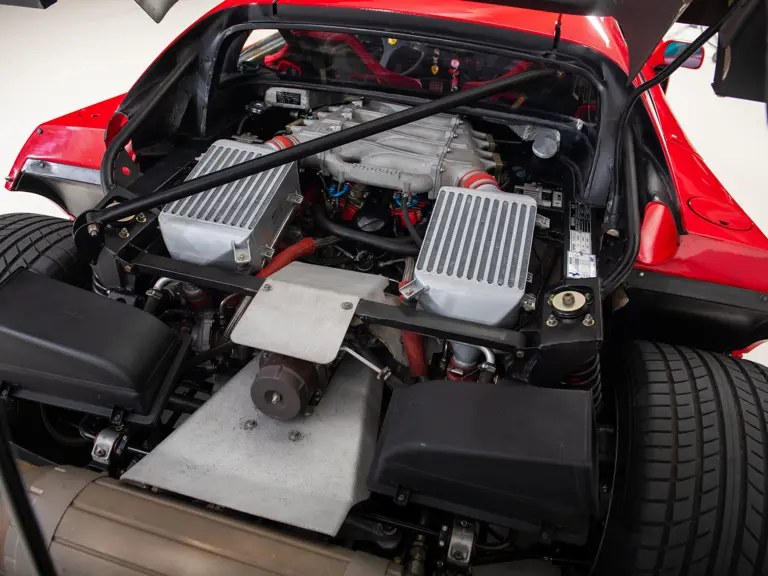
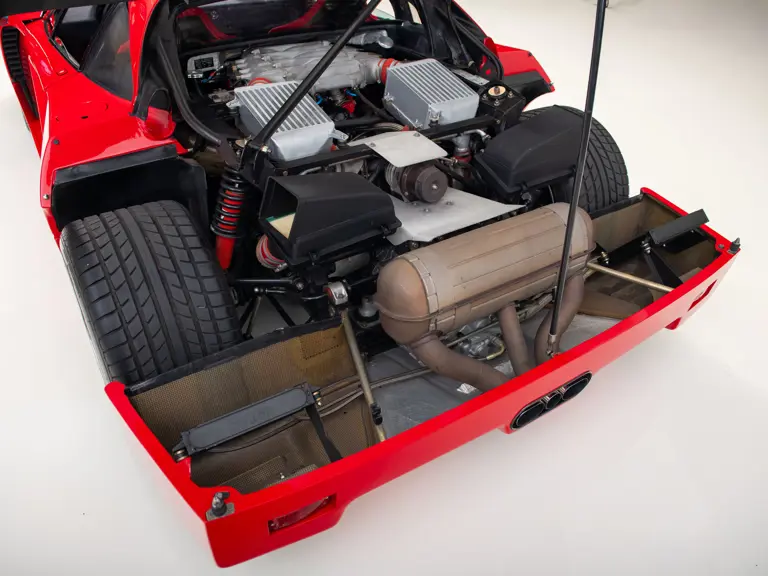

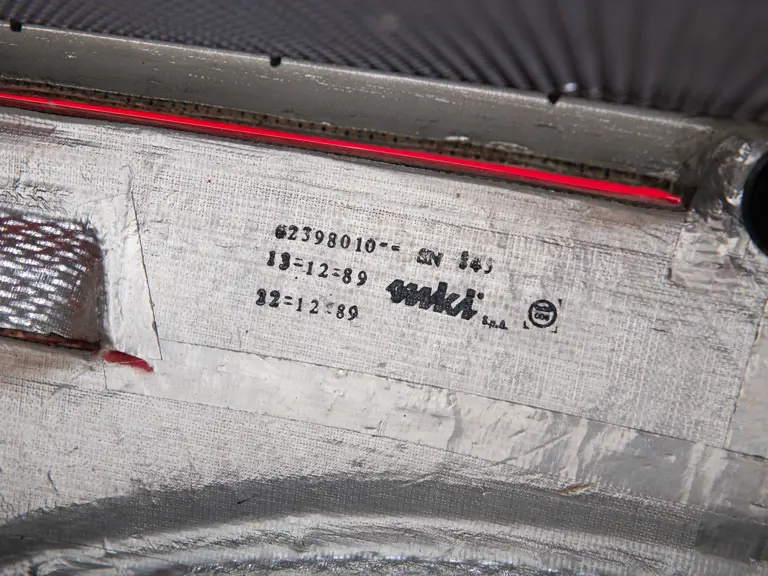
 | Toronto, Ontario
| Toronto, Ontario
